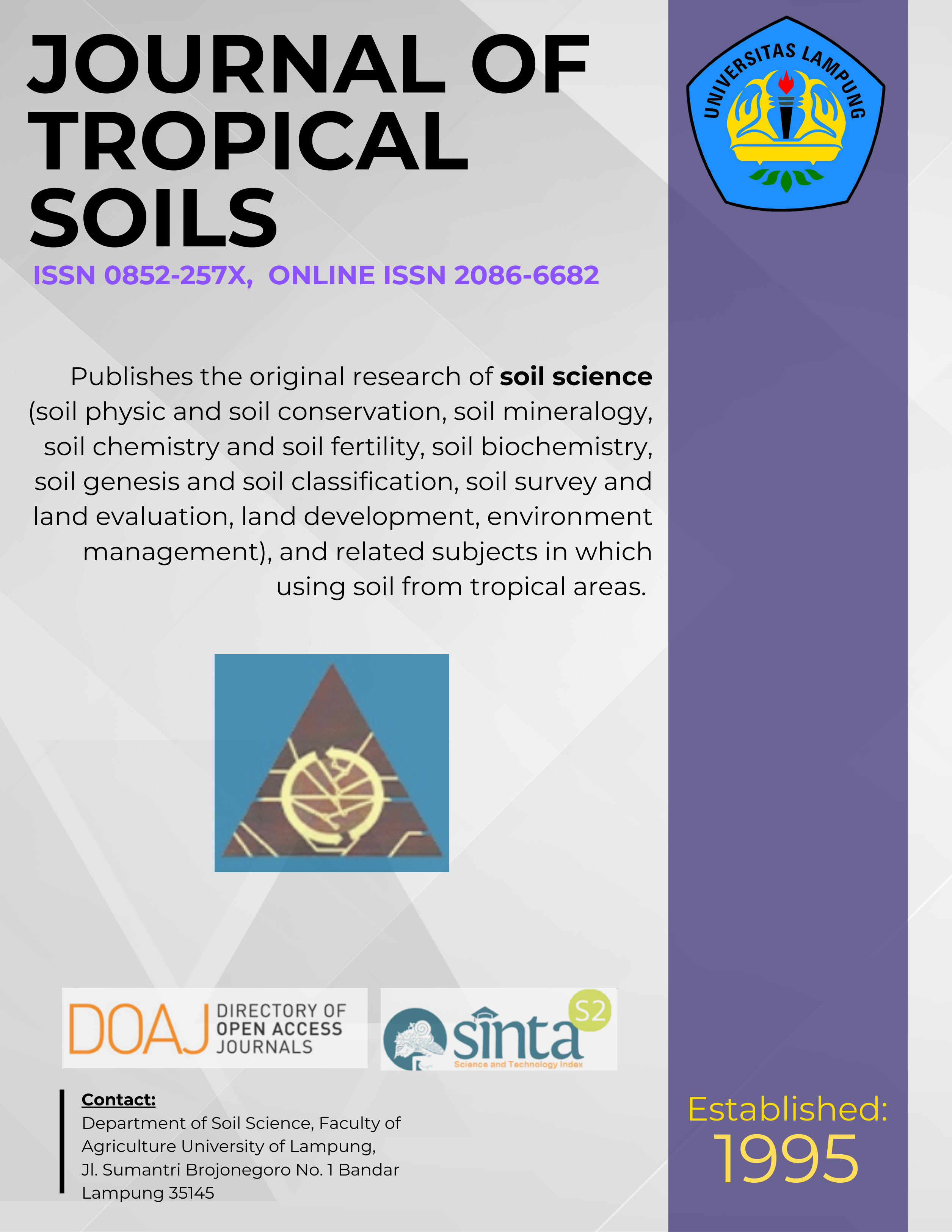Local Rice Cultivars Grown On Tidal Swampland Near Coastal Area in South Kalimantan
Main Article Content
Abstract
Local farmers in South Kalimantan (Banjarese farmers) use to grow local rice cultivars. The local rice growing areas are varied with distance from the coastal line. Consequently, the degree of salinity also varied. To overcome the salinity problem, farmers do their last transplanting earlier than the farmers in the inland area and grow the local rice cultivars that they believe tolerant to salinity. In this study, we investigate the local rice cultivars grown by the farmers in the coastal areas. Sixty paddocks were selected in Pulantan, Aluh-Aluh, Simpang Warga and Bunipah Villages, Aluh-Aluh District, Banjar Regency, South Kalimantan. The rice yield of each paddock was estimated by sampling 3 x 5 hills in 3 replicates. The soil was collected within the 3 x 5 hills area and analysed their electric conductivity (EC) and pH. We found that there were four families of local rice cultivars grown, namely, Palas, Bayar, Pandak and Siam families. Among all local rice cultivars grown, it was revealed that Pandak Putih and Siam Unus produced the highest yields. However, according to the farmers, Palas and Bayar families are the common rice tolerant to salinity. The good price of Siam family and good yield of Pandak family at other paddocks might become the considerant of growing such rice families in the study site.
Downloads
Article Details
Issue
Section
License for Authors
Authors who publish with this journal agree to the following terms:
- Authors retain copyright and grant the journal right of first publication with the work simultaneously licensed under a Creative Commons Attribution License that allows others to share the work with an acknowledgement of the work's authorship and initial publication in this journal.
- Authors are able to enter into separate, additional contractual arrangements for the non-exclusive distribution of the journal's published version of the work (e.g., post it to an institutional repository or publish it in a book), with an acknowledgement of its initial publication in this journal.
- Authors are permitted and encouraged to post their work online (e.g., in institutional repositories or on their website) prior to and during the submission process, as it can lead to productive exchanges, as well as earlier and greater citation of published work (See The Effect of Open Access).
License for Regular Users
Other regular users who want to cite, distribute, remix, tweak, and build upon author’s works, even for commercial purposes, should acknowledge the work’s authorship and initial publication in this journal, licensed under a Creative Commons Attribution License.

